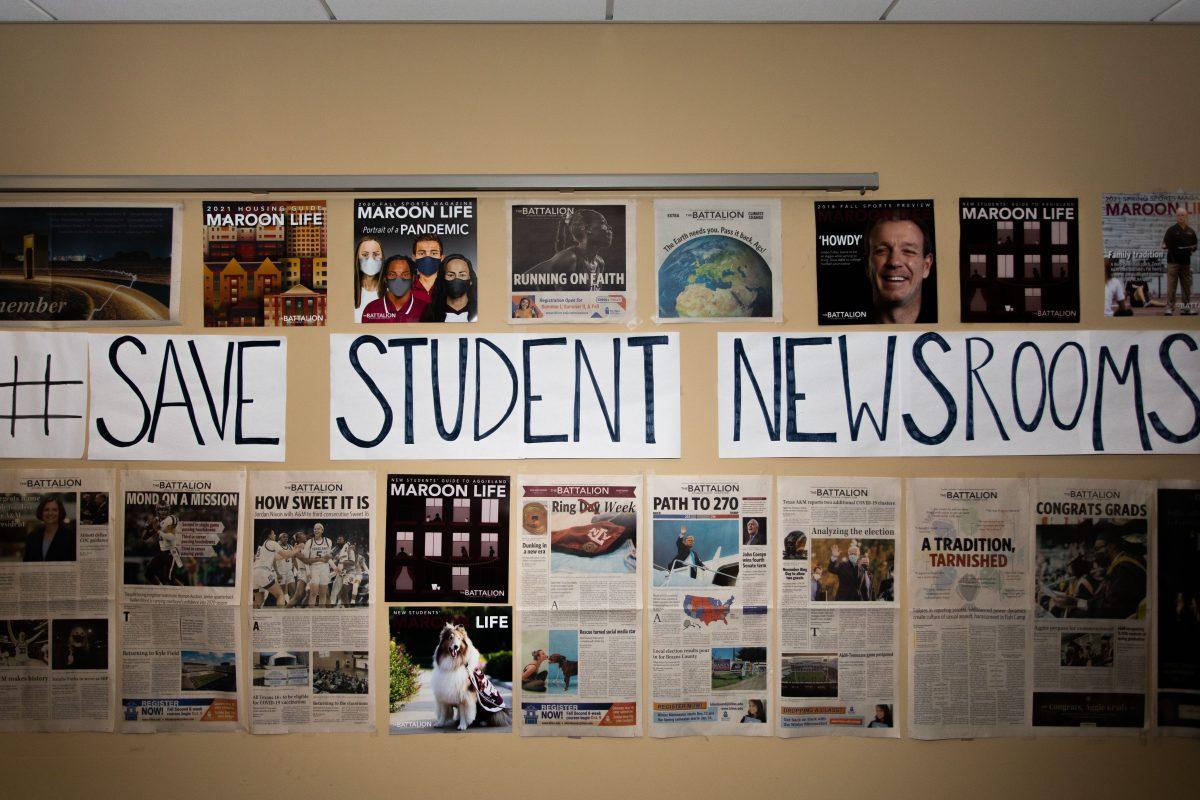Although there has been a 22.4 percent increase in the diversion rates of solid waste at Texas A&M over six fiscal years, the utilities and energy services department are aiming to continue to increasing recycled material this fiscal year.
Students can use recycling drop off on campus for larger amounts of recyclable waste that gathers in their apartments, on campus housing, or otherwise. From the fiscal year of 2011 to 2017, the utilities and energy services recycling services has jumped from a diversion rate of 49.9 percent to 72.3 percent, an increase of about 22.4 percent in six years.
With a vision to excel in the recycling programs of Texas A&M University, Terry Easterwood, associate director of utilities and energy services division of finance and administration, said despite the growth of recycling programs on campus, he aims to see an increase in tonnage in the future.
“We would like to keep that growing,” Easterwood said. “One of the ways that we can keep that growing is to mainly raise awareness. There’s things that, being in my position and also as a former student, you go around campus, you go to games and you see opportunities that are missed.”
One of the largest issues for Easterwood is focusing on increasing the diversion rate, which is the rate of solid wastes that are going to recycling centers rather than to a landfill.
“We want to make sure that everyone on campus understands that we all play a role in trying to get our diversion rates up and being as sustainable as a campus as we can be,” Easterwood said.
Zachery McNew, communications coordinator with utility and energy services, said there are three main goals the department has set.
“The three goals are to reduce what goes to the landfill, increase the recycling that is on campus, and also kind of promote the idea of working with vendors to eliminate the commodities that are coming to campus that aren’t able to be recycled,” McNew said. “We want to start looking at vendors who offer us better recycled material that comes to campus.”
The approach in also reducing the amount of waste created by products sold on campus will be part of a more complete attempt in reducing landfill waste on campus, according to McNew.
“It’s not just the students having bins on campus to throw away their paper or their bottles,” McNew said. “Overall, we want the departments to be involved in it, we want the colleges to be involved in it, we want the purchasing groups, you know, everybody, to be aware of their impact on campus. This group was started with that idea in mind.”
To increase recycling opportunities, utilities and energy services will be doubling what is referred to as “big bellies,” or the waste bins this week that have three divisions marked for paper, bottles and cans, or landfill.
“We are actually increasing that by about double, we have 65 brand new bins that are coming in,” McNew said. “We also have four drop off centers, which Adriance Lab Road is kind of the big one, but students don’t actually know much about it.”
Although Bryan and College Station have recycling centers, the city often does not collect at student apartments. The recycling center on Adriance Lab Road is a drop off location for students who live on and off campus for any recycled material.
“The majority of the students on this campus live in an apartment that doesn’t really offer recycling,” McNew said. “So Adriance Lab Road, which is right there on west campus, it’s open to the community, Bryan-College Station, not just the campus. That’s not only paper and aluminum and plastic, but also they do glass recycling out there too, they do cardboard recycling, which we have a lot of move in move out, so it’s a full 24-hour drop off center.”
Shelia McQueen, solid waste minimization specialist at utilities and energy services, works to educate the campus about recycling programs and options on campus. She said she is working to reach out to various student groups and events to talk about these options on campus.
“I have just completed a powerpoint presentation to take with me around campus and present that to different student groups,” McQueen said. “We [sustainability groups] work closely together to organize everything, it’s like hand in hand. We will be presenting together, so doing that as a group.”
Providing holistic resources and approaches toward students is one of many ways the department is working to help increase the diversion rates on campus, according to McNew.
“We are trying to be as prevalent as possible, but we just want student’s to know that they can still have an impact even if they are living in an apartment that doesn’t offer those services because we are offering those services for them,” McNew said.
Utilities and Energy Services working to increase diversion rates
February 12, 2018
Photo by Photo by Savannah Skrivanek
Drive-in centers and curbside pickup are available in Bryan and College Station respectively for residents interested in recycling.
0
Donate to The Battalion
$0
$5000
Contributed
Our Goal
Your donation will support the student journalists of Texas A&M University - College Station. Your contribution will allow us to purchase equipment and cover our annual website hosting costs, in addition to paying freelance staffers for their work, travel costs for coverage and more!
More to Discover









